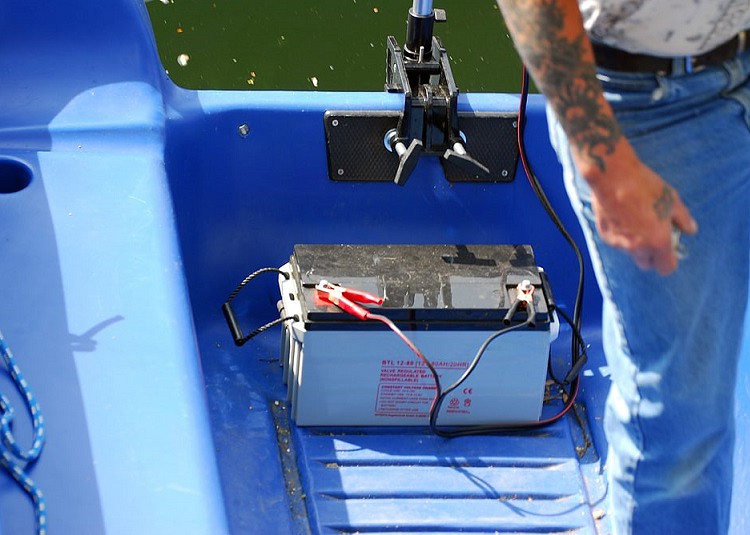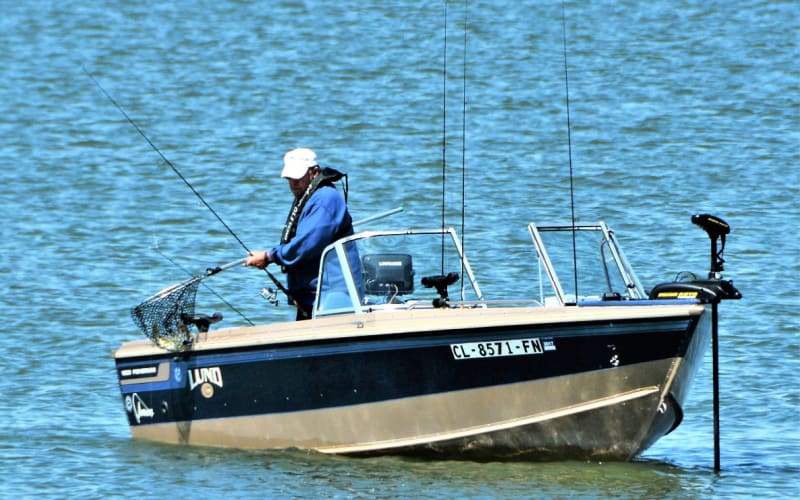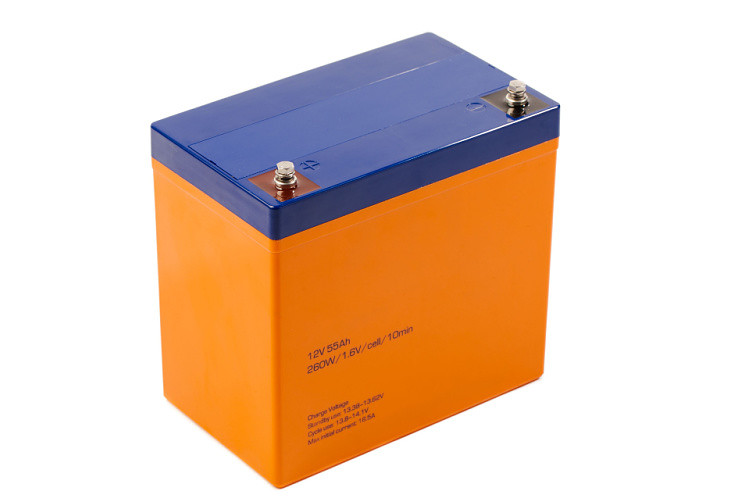It’s important to have a basic idea of how long your marine battery will last on a single charge, especially when it’s powering your trolling motor. If your battery dies unexpectedly, you could find yourself stranded out on the water.
But is there any way of knowing how long your battery may last?
How long will a marine battery run a trolling motor on a single charge?
What factors can affect your battery’s run time?
And is there any way to make a battery last longer between charges?
Keep reading!
In this article, we’ll answer all of these questions and more.
Table of Contents
How Long Does a Marine Battery Last on a Trolling Motor?
The question seems simple enough: how long can you expect your battery to last? How many hours of power will your trolling motor have per battery charge?
Unfortunately, the simplest answer to this question is, it depends. Every battery and trolling motor is slightly different, and there are many different variables that may influence how long your battery is going to last.
Because of these variables, the same battery may run your trolling motor for a given amount of time on one boating trip and for a completely different amount of time on another trip.
Let’s take a closer look at these variables.
What Factors Impact the Run Time of a Marine Battery on a Trolling Motor?
1. Amp Hours
One of the most important numbers when figuring battery run time is the amp hours, or Ah. This number should be given on all marine batteries. It denotes the amount of amperage the battery could supply over a given time period.
For example, let’s consider a marine battery with a 100Ah rating. Fully charged, and under perfect conditions, this battery could supply your trolling motor 100 amps of power for one hour, 50 amps for 2 hours, 25 amps for 4 hours, 10 amps for 10 hours, etc.
As you can see from the example above, how long the battery lasts depends on how many amps your trolling motor is consistently drawing from the battery. The lower the amp draw, the longer the battery will last.
Marine batteries come with different amp hour ratings. Some have 50Ah or 75Ah ratings, many have 100Ah or 120Ah ratings, and some even have 200Ah ratings. Obviously, the ones with higher amp hour ratings are going to last longer between charges.
2. Battery Size

Batteries that are larger physically are generally capable of holding more power. This isn’t true across the board, of course, but it is one thing to keep in mind.
If you buy a small battery to fit in your kayak, for example, it isn’t going to give you as much run time as a larger battery would. That said, a kayak-sized trolling motor will probably draw less power from the battery, which may increase its charge life.
3. Battery Type
There are four main types of marine batteries: lead-acid, AGM, gel, and lithium. Of these types, lithium batteries generally last the longest while lead-acid batteries typically need more frequent recharging.
Of course, it also depends on the quality of the battery. A well-made lead acid battery from an established and trusted brand may perform better than a cheap, low-quality lithium battery.
4. Battery Age
Regardless of the type of battery, it will lose its ability to hold a charge over time. Older batteries tend to develop internal resistance that makes them more difficult to charge, and when in use, they may discharge more quickly.
If you have an older battery, you can expect that it won’t last as long as it did when it was newer. The problem will only get worse, so it may be a good idea to keep a battery charger on board your boat, just in case the battery dies sooner than you’re expecting.
Maintenance
Some battery types require more maintenance than others, but all types should be properly cleaned and cared for between uses. Stay up to date on any specific maintenance that needs to be done, such as refilling the fluid chamber on lead-acid batteries.
Proper maintenance will extend the life of your battery, thus improving its ability to hold a charge. Batteries kept in proper working order will not discharge as quickly as batteries that are not taken care of.
5. Weather Conditions

Operating your trolling motor in extreme temperatures, high winds, and choppy waters will force your battery to work harder, thus causing it to discharge faster.
What’s more, rough weather conditions may cause your battery to be rained on or splashed with sea spray, which can cause damage if the water gets beneath the battery’s outer casing.
Batteries hold a charge for longer in calm waters and mild temperatures. If you plan on braving the elements, it would be a good idea to have an extra battery or a battery charger on board, so you don’t end up stranded.
6. Boat Size

A larger, heavier boat will take more power to push through the water than a small, lightweight boat. More draw on the battery will lead to a quicker discharge.
If you have a larger boat, it’s a good idea to invest in a battery with a higher amp hour rating. A large boat will be able to support the additional size and weight, and you’ll be able to spend more time out on the water, doing what you love.
7. Usage
If you are using a single battery for more than just your trolling motor, it will discharge more quickly because multiple sources will be drawing from it.
For example, if you’re running your trolling motor and fishfinder off the same battery, neither device will last as long as it would on its own. Both are drawing from the battery simultaneously, so the battery will run out of power sooner than it would power only one device.
How Can I Calculate the Battery Run Time on a Trolling Motor?
There is no way to consider all of the factors discussed above; in other words, you cannot accurately predict how long your battery will last on a given outing. But you can give yourself a rough estimate with a few simple calculations.
To estimate how long your battery would last under ideal conditions, divide the battery’s amp hour rating by the maximum amp draw of the motor.
For example, say you have a 100Ah battery and a trolling motor with a max amp draw of 50 amps. 100 divided by 50 equals 2, so the battery would last for about two hours with the trolling motor drawing the maximum number of amps.
Of course, you won’t necessarily be using the trolling motor at top speed the whole time. Maybe you leave your trolling motor on slow or medium speed and the amp draw is about 20. 100 divided by 20 equals 5, so you could expect your battery to last about 5 hours.
For a more in-depth discussion on the topic, check out this helpful article from Newport Vessels.
Again, it’s important to remember you won’t always be running at maximum amp draw, and you can’t factor in other conditions such as water and wind conditions or battery age. Dividing amp hours by amp draw only gives you an estimate.
Can I Make the Battery Last Longer?

So now that you know what factors affect battery life, is there any way to extend your battery’s run time per charge? How can you make your battery last longer?
- Running the motor at low speed: As noted above, there’s rarely any need to keep your trolling motor on the highest setting, as it will drain your battery more quickly.
Keep the motor at a slower speed as much as possible. The amp draw will be lower, so your battery will last longer. - Going out in calm waters: Rough weather and water conditions make it necessary to run your motor at higher speeds, which puts an extra strain on your battery. If you want to get the most time out of a charge, stick to calm waters on mild days.
- Using the battery only for the trolling motor: Again, the more you draw power from the battery, the sooner that power will be used up.
If you have other devices on board that require battery power, it may be best to have a separate battery for them. Use your trolling motor battery only for your trolling motor if you want it to last as long as possible.
FAQ
How Long Will a 12V Battery Last With a Trolling Motor?

It will depend on all of the factors listed above, so it’s impossible to say exactly.
To estimate how long it may last, compare the battery’s amp hour rating against the motor’s amp draw.
For example, the Minn Kota Edge 70 trolling motor has a max amp draw of 42 amps; if you were using the Renogy Hybrid Gel 100Ah battery , you would divide 100 by 42 for an approximate run time of 2.4 hours at top speed.
What is the Longest Lasting Marine Battery Used With a Trolling Motor?

Generally speaking, the longest-lasting marine batteries are good-quality lithium phosphate batteries. These batteries discharge more slowly and can be discharged much deeper than other types of batteries.
Again though, it largely depends on amp hours vs. amp draw, along with many other factors. Regardless of the type of battery you choose, it’s important to select a high-quality one and then take care of it.
Conclusion
How long a marine battery powers a trolling motor depends on many factors. There are various battery sizes and capacities, trolling motors with a variety of amp draw needs, and many conditions in the environment that can affect how quickly a battery discharges.

Sarah Hood has been writing for Anchor Travel since 2021. When she’s not writing, she enjoys cooking, singing, and spending time in the great outdoors.

